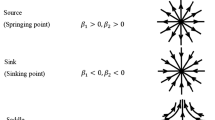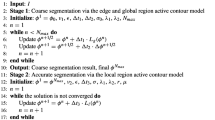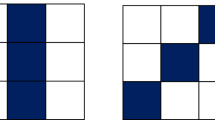Abstract
Recently, the Sobolev metric was introduced to define gradient flows of various geometric active contour energies. It was shown that the Sobolev metric out-performs the traditional metric for the same energy in many cases such as for tracking where the coarse scale changes of the contour are important. Some interesting properties of Sobolev gradient flows are that they stabilize certain unstable traditional flows, and the order of the evolution PDEs are reduced when compared with traditional gradient flows of the same energies. In this paper, we explore new possibilities for active contours made possible by Sobolev active contours. The Sobolev method allows one to implement new energy-based active contour models that were not otherwise considered because the traditional minimizing method cannot be used. In particular, we exploit the stabilizing and the order reducing properties of Sobolev gradients to implement the gradient descent of these new energies. We give examples of this class of energies, which include some simple geometric priors and new edge-based energies. We will show that these energies can be quite useful for segmentation and tracking. We will show that the gradient flows using the traditional metric are either ill-posed or numerically difficult to implement, and then show that the flows can be implemented in a stable and numerically feasible manner using the Sobolev gradient.
G. Sundaramoorthi and A. Yezzi were supported by NSF CCR-0133736, NIH/NINDS R01-NS-037747, and Airforce MURI; G. Sapiro was partially supported by NSF, ONR, NGA, DARPA, and the McKnight Foundation.
Preview
Unable to display preview. Download preview PDF.
Similar content being viewed by others
References
Kass, M., Witkin, A., Terzopoulos, D.: Snakes: Active contour models. International Journal of Computer Vision 1, 321–331 (1987)
Caselles, V., Kimmel, R., Sapiro, G.: Geodesic active contours. In: Proceedings of the IEEE Int. Conf. on Computer Vision, Cambridge, MA, USA, June 1995, pp. 694–699. IEEE Computer Society Press, Los Alamitos (1995)
Kichenassamy, S., et al.: Gradient flows and geometric active contour models. In: Proceedings of the IEEE Int. Conf. on Computer Vision, pp. 810–815. IEEE Computer Society Press, Los Alamitos (1995)
Mumford, D., Shah, J.: Optimal approximations by piecewise smooth functions and associated variational problems. Comm. Pure Appl. Math. 42, 577–685 (1989)
Chan, T., Vese, L.: Active contours without edges. IEEE Transactions on Image Processing 10(2), 266–277 (2001)
Chen, Y., et al.: Using prior shapes in geometric active contours in a variational framework. International Journal of Computer Vision 50(3), 315–328 (2002)
Rousson, M., Paragios, N.: Shape Priors for Level Set Representations. In: Heyden, A., et al. (eds.) ECCV 2002. LNCS, vol. 2351, pp. 78–92. Springer, Heidelberg (2002)
Cremers, D., Soatto, S.: A pseudo distance for shape priors in level set segmentation. In: IEEE Int. Workshop on Variational, Geometric and Level Set Methods, pp. 169–176. IEEE Computer Society Press, Los Alamitos (2003)
Kim, J., et al.: Nonparametric methods for image processing using information theory and curve evolution. In: IEEE International Conference on Image Processing, vol. 3, pp. 797–800. IEEE Computer Society Press, Los Alamitos (2002)
Rochery, M., Jermyn, I., Zerubia, J.: Higher order active contours and their application to the detection of line networks in satellite imagery. In: IEEE Workshop on VLSM, October 2003, IEEE Computer Society Press, Los Alamitos (2003)
Sundaramoorthi, G., Yezzi, A.J.: More-than-topology-preserving flows for active contours and polygons. In: ICCV, pp. 1276–1283 (2005)
Cohen, L.D., Kimmel, R.: Global minimum for active contour models: A minimal path approach. In: CVPR, pp. 666–673 (1996)
Boykov, Y., Jolly, M.-P.: Interactive graph cuts for optimal boundary and region segmentation of objects in n-d images. In: ICCV, pp. 105–112 (2001)
Kolmogorov, V., Boykov, Y.: What metrics can be approximated by geo-cuts, or global optimization of length/area and flux. In: ICCV, pp. 564–571 (2005)
Michor, P., Mumford, D.: Riemannian geometries on the space of plane curves. ESI Preprint 1425, arXiv:math.DG/0312384 (2003)
Yezzi, A.J., Mennucci, A.: Conformal metrics and true “gradient flows” for curves. In: ICCV, pp. 913–919 (2005)
Yezzi, A.J., Sundaramoorthi, G., Mennucci, A.C.: Sobolev Active Contours. In: Paragios, N., et al. (eds.) VLSM 2005. LNCS, vol. 3752, pp. 109–120. Springer, Heidelberg (2005)
Charpiat, G., et al.: Designing spatially coherent minimizing flows for variational problems based on active contours. In: ICCV (2005)
Sundaramoorthi, G., et al.: Tracking with sobolev active contours. In: CVPR (1), pp. 674–680 (2006)
Horn, B.K.P.: The curve of least energy. ACM Transactions on Mathematical Software 9(4), 441–460 (1983), http://doi.acm.org/10.1145/356056.356061
Bruckstein, A.M., Netravali, A.N.: On minimal energy trajectories. Comput. Vision Graph. Image Process. 49(3), 283–296 (1990)
Polden, A.: Curves and Surfaces of Least Total Curvature and Fourth-Order Flows. PhD thesis, Mathematisches Institut Unversitat Tubingen, Germany (1996)
Sapiro, G., Tannenbaum, A.: Area and length preserving geometric invariant scale-spaces. IEEE Trans. Pattern Anal. Mach. Intell. 17(1), 67–72 (1995)
Delingette, H.: On smoothness measures of active contours and surfaces. In: VLSM ’01: Proceedings of the IEEE Workshop on Variational and Level Set Methods (VLSM’01), Washington, DC, USA, p. 43. IEEE Computer Society Press, Los Alamitos (2001)
Brook, A., Bruckstein, A.M., Kimmel, R.: On similarity-invariant fairness measures. In: Scale-Space, pp. 456–467 (2005)
Ma, T., Tagare, H.: Consistency and stability of active contours with euclidean and non-euclidean arc lengths. IEEE Transactions on Image Processing 8(11), 1549–1559 (1999)
Fua, P., Leclerc, Y.G.: Model driven edge detection. Mach. Vision Appl. 3(1), 45–56 (1990)
Jackson, J., Yezzi, A., Soatto, S.: Tracking deformable moving objects under severe occulsions. In: IEEE Conference on Decision and Control, Dec. 2004, IEEE Computer Society Press, Los Alamitos (2004)
Author information
Authors and Affiliations
Editor information
Rights and permissions
Copyright information
© 2007 Springer Berlin Heidelberg
About this paper
Cite this paper
Sundaramoorthi, G., Yezzi, A., Mennucci, A.C., Sapiro, G. (2007). New Possibilities with Sobolev Active Contours. In: Sgallari, F., Murli, A., Paragios, N. (eds) Scale Space and Variational Methods in Computer Vision. SSVM 2007. Lecture Notes in Computer Science, vol 4485. Springer, Berlin, Heidelberg. https://doi.org/10.1007/978-3-540-72823-8_14
Download citation
DOI: https://doi.org/10.1007/978-3-540-72823-8_14
Publisher Name: Springer, Berlin, Heidelberg
Print ISBN: 978-3-540-72822-1
Online ISBN: 978-3-540-72823-8
eBook Packages: Computer ScienceComputer Science (R0)




